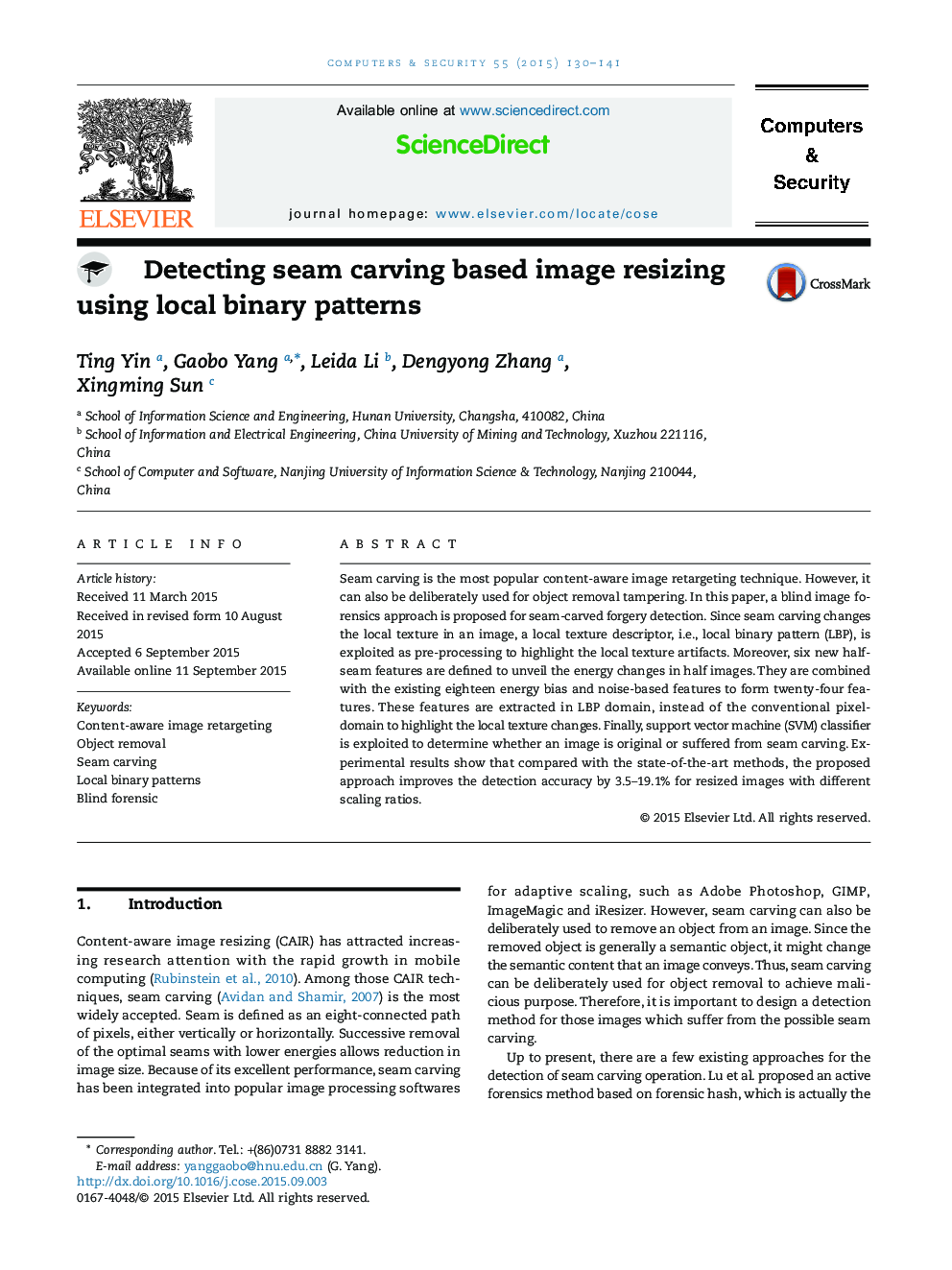| Article ID | Journal | Published Year | Pages | File Type |
|---|---|---|---|---|
| 455826 | Computers & Security | 2015 | 12 Pages |
•Local binary pattern is introduced to highlight the local texture artifacts from seam carving.•Six new half-seam features are defined to unveil the energy bias in the upper and lower half-images.•All the features are extracted in LBP domain, instead of conventional pixel domain.
Seam carving is the most popular content-aware image retargeting technique. However, it can also be deliberately used for object removal tampering. In this paper, a blind image forensics approach is proposed for seam-carved forgery detection. Since seam carving changes the local texture in an image, a local texture descriptor, i.e., local binary pattern (LBP), is exploited as pre-processing to highlight the local texture artifacts. Moreover, six new half-seam features are defined to unveil the energy changes in half images. They are combined with the existing eighteen energy bias and noise-based features to form twenty-four features. These features are extracted in LBP domain, instead of the conventional pixel-domain to highlight the local texture changes. Finally, support vector machine (SVM) classifier is exploited to determine whether an image is original or suffered from seam carving. Experimental results show that compared with the state-of-the-art methods, the proposed approach improves the detection accuracy by 3.5–19.1% for resized images with different scaling ratios.
